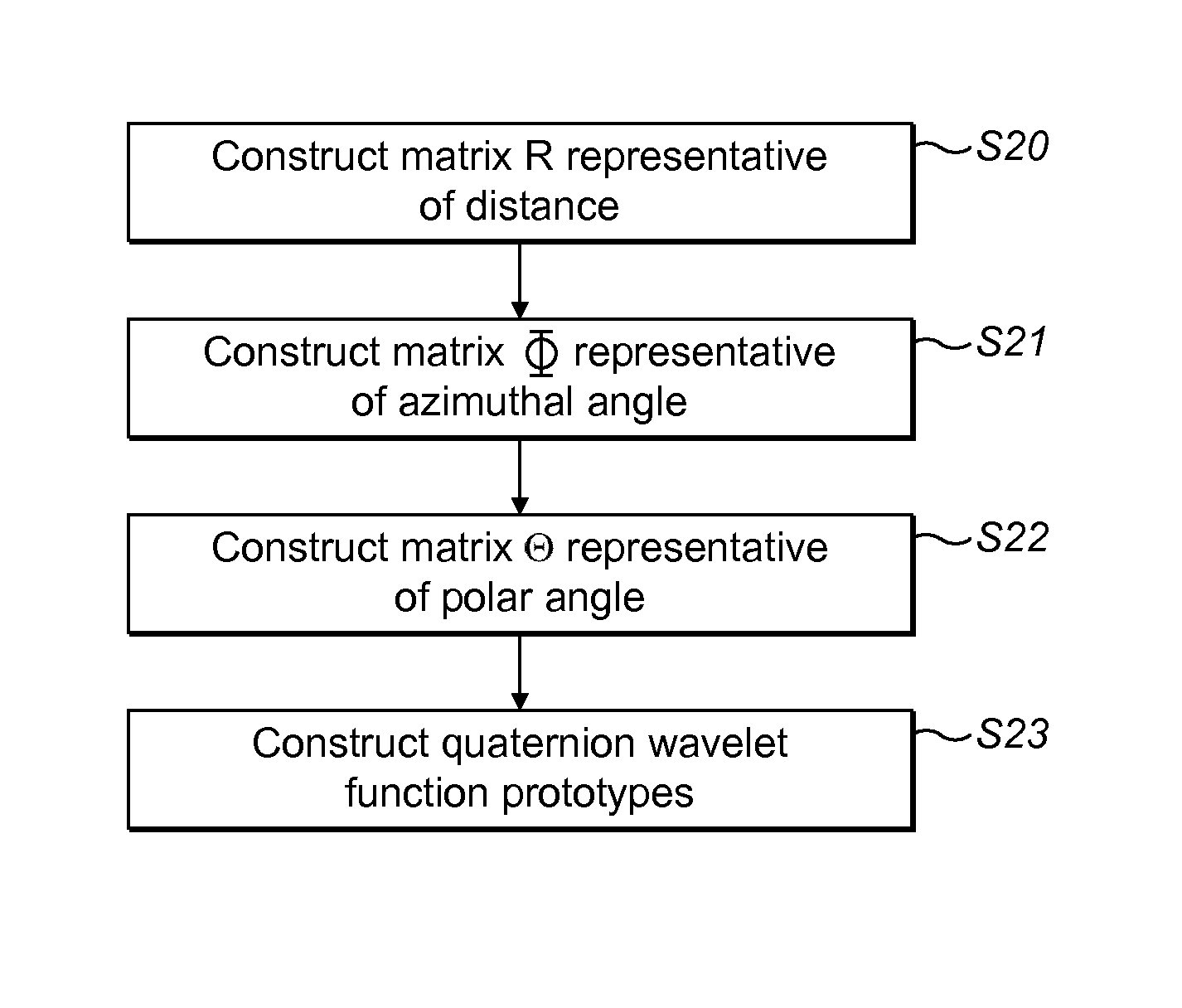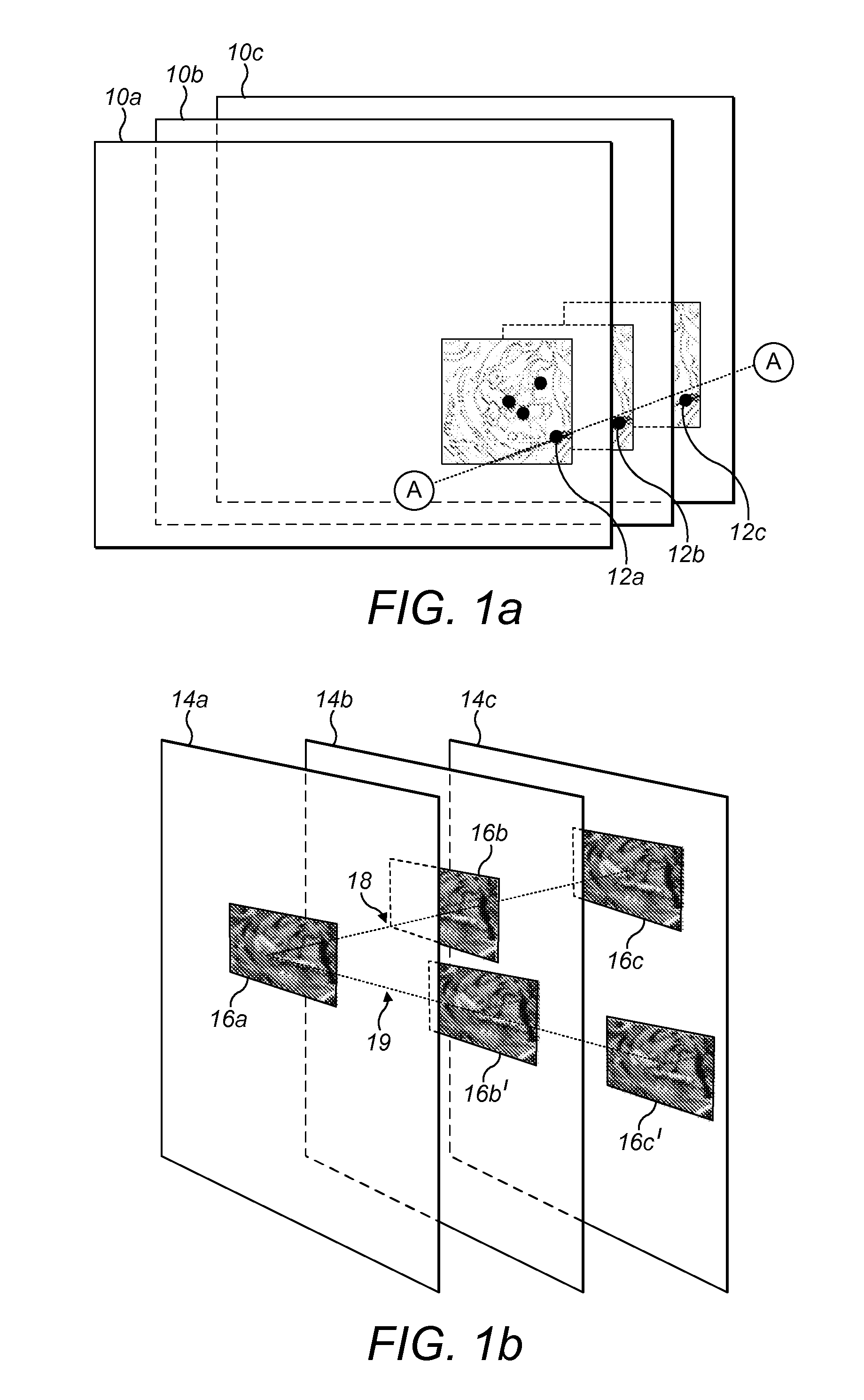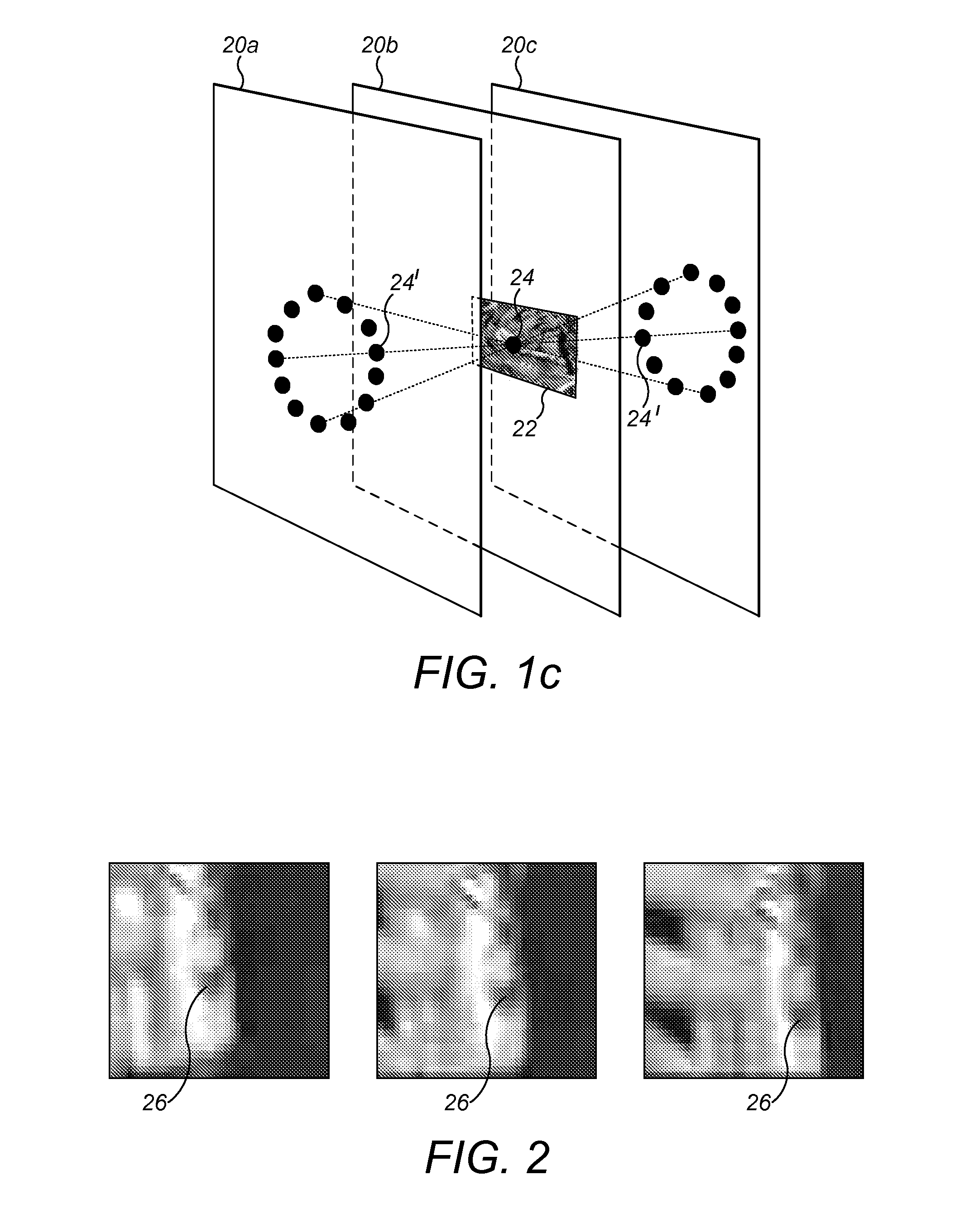Keypoint descriptor generation by complex wavelet analysis
a complex wavelet and keypoint descriptor technology, applied in the field of image processing, can solve the problems of not being able to account for occlusion or objects within images, large amount of processing required, and not being created to tackle problems, so as to facilitate the generation of keypoint descriptors, reduce or no detrimental effect on the quality of object identification, and ensure the accuracy of object identification. high quality
- Summary
- Abstract
- Description
- Claims
- Application Information
AI Technical Summary
Benefits of technology
Problems solved by technology
Method used
Image
Examples
Embodiment Construction
[0070]Embodiments of the present invention provide a method of identifying a feature or an object in an image, and in particular embodiments of identifying an object in a series of images spaced over time, using a keypoint descriptor generated in accordance with the present invention.
Image Processing Apparatus
[0071]In embodiments of the method of the invention to be described the keypoint descriptor generated by the present invention is used to identify an object in an image, the method being performed by computer software which the image processing apparatus is arranged to run. The keypoint descriptor generated according to the invention may also be generated using computer software running on the image processing apparatus. The computer software may be stored on a suitable data carrier such as a compact disc (CD).
[0072]FIG. 3 shows schematically apparatus 30 arranged to perform the method of the invention. The apparatus 30 includes a computer terminal CT which includes a central p...
PUM
 Login to View More
Login to View More Abstract
Description
Claims
Application Information
 Login to View More
Login to View More - R&D
- Intellectual Property
- Life Sciences
- Materials
- Tech Scout
- Unparalleled Data Quality
- Higher Quality Content
- 60% Fewer Hallucinations
Browse by: Latest US Patents, China's latest patents, Technical Efficacy Thesaurus, Application Domain, Technology Topic, Popular Technical Reports.
© 2025 PatSnap. All rights reserved.Legal|Privacy policy|Modern Slavery Act Transparency Statement|Sitemap|About US| Contact US: help@patsnap.com



